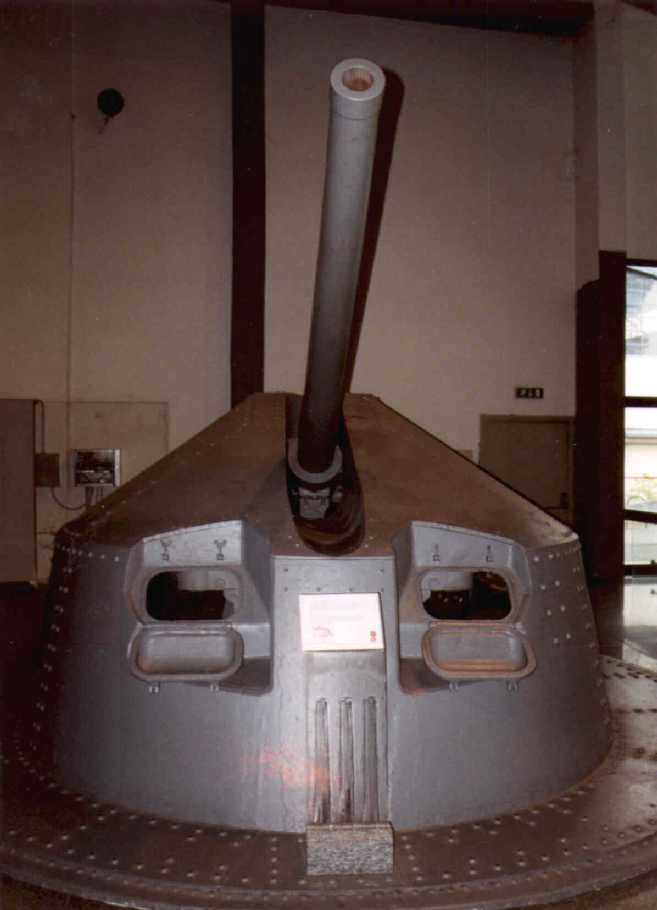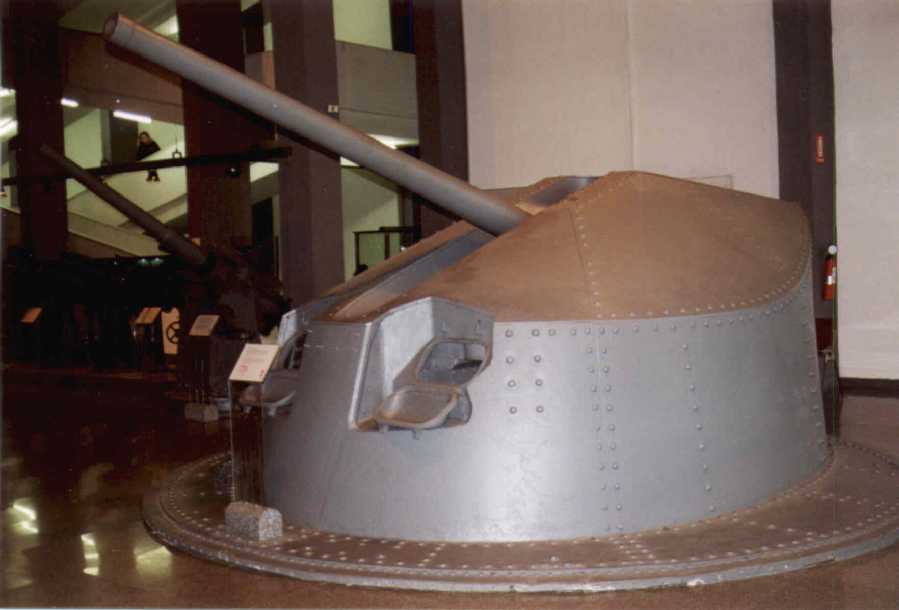|
Consisted of autofretted monobloc barrel with a screwed-on breech ring holding the horizontal sliding breech block and seatings for the run-out and recoil cylinders. The gun barrel was attached to the receiver by a bayonet joint. The original design was 48 calibers in length, but the production guns were 50 calibers long. There was also a 90 mm/53 gun produced during the war that was considered to be one of the best Italian AA weapons. This weapon continued in service until the 1950s. |

90 mm/50 (3.5") from Caio Duilio now at
the Milan Museum of Science and Technique
|

Another view of above 90 mm/50 mounting
|